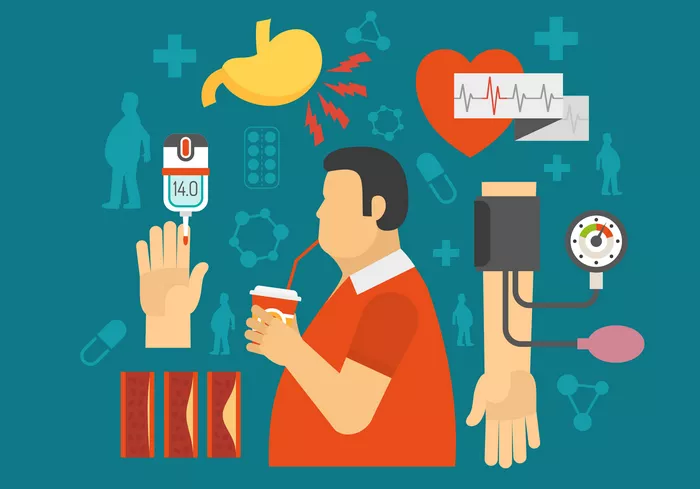Managing carbohydrate intake is a fundamental aspect of diabetes care, particularly for individuals who are either insulin resistant or have impaired glucose tolerance. Carbohydrates have a direct impact on blood glucose levels, and controlling their intake can significantly help in maintaining blood sugar stability. In this article, we will explore the optimal carbohydrate intake per meal for people with diabetes, the factors influencing this recommendation, and how to effectively plan a balanced diet.
Understanding Carbohydrates and Their Role in Diabetes
Carbohydrates, often referred to as “carbs,” are one of the three primary macronutrients, along with proteins and fats. Carbs are broken down into glucose (sugar) in the body, which is then used as energy by cells. For people without diabetes, this process is regulated by insulin, a hormone produced by the pancreas. However, for individuals with diabetes, insulin production may be impaired (Type 1 diabetes), or cells may become resistant to the effects of insulin (Type 2 diabetes).
Carbohydrate intake is particularly important for people with diabetes because excessive or unbalanced carb consumption can cause blood sugar spikes. Conversely, inadequate carb intake can lead to hypoglycemia (low blood sugar). The goal is to find a balance that keeps blood sugar levels within the target range.
How Many Carbs Should a Diabetic Eat in a Meal?
The amount of carbohydrates a diabetic should eat per meal can vary based on several factors, including the individual’s age, activity level, weight, medications, and overall health. However, a general guideline provided by various health organizations and experts can be used as a starting point.
Typical Carb Recommendations:
- For women with diabetes: 30 to 45 grams of carbohydrates per meal.
- For men with diabetes: 45 to 60 grams of carbohydrates per meal.
These recommendations are not one-size-fits-all, and it’s important for individuals to consult with their healthcare provider or a registered dietitian to personalize their carb intake. The key is to monitor blood sugar levels closely and adjust carbohydrate consumption as needed to maintain optimal glycemic control.
Factors Influencing Carbohydrate Needs
Several factors influence the number of carbohydrates a person with diabetes should consume per meal. Understanding these factors can help individuals tailor their diet more effectively.
1. Type of Diabetes
Type 1 Diabetes: Individuals with Type 1 diabetes typically require more precise carbohydrate counting, as they must match their insulin doses to the amount of carbs consumed. Carbohydrate intake may need to be adjusted based on daily insulin needs and activity levels.
Type 2 Diabetes: People with Type 2 diabetes may have more flexibility in their carbohydrate intake, especially if they are using medications that do not require precise carb counting. However, moderation and portion control are still crucial to prevent blood sugar spikes.
2. Activity Level
Physical activity can affect how many carbohydrates a person with diabetes should consume in a meal. Exercise increases insulin sensitivity, allowing the body to use glucose more efficiently. For those who are physically active, carbohydrate intake may be slightly higher before and after exercise to prevent hypoglycemia.
3. Body Weight and Composition
Body weight and muscle mass can impact how many carbs a person should eat. Individuals with a higher body weight may require more carbohydrates to meet their energy needs, while those aiming to lose weight may need to reduce their carb intake.
4. Medications and Insulin Use
Medications such as insulin, sulfonylureas, and other blood sugar-lowering drugs play a significant role in determining carb intake. Individuals using insulin may need to match their carb intake with their insulin doses to maintain blood sugar control.
5. Personal Blood Sugar Goals
The target blood sugar levels set by a healthcare provider should guide carb intake. For example, if an individual’s blood sugar levels tend to rise sharply after meals, reducing carb intake or choosing lower-glycemic index carbs may be necessary.
Carbohydrate Counting and Meal Planning
Carbohydrate counting is a practical method used by people with diabetes to manage their carb intake. This technique involves tracking the number of carbohydrates consumed at each meal and snack, allowing for better blood sugar management.
How to Count Carbs:
Carbs can be measured in grams, and most food labels provide this information. To effectively count carbs, it is important to:
Read Nutrition Labels: Check the total carbohydrate content per serving and adjust portion sizes accordingly.
Use Measuring Tools: Measuring cups, spoons, and food scales can help accurately portion out carb-rich foods.
Learn About Carb Content in Common Foods: Familiarize yourself with the carb content of common foods such as bread, rice, pasta, fruits, vegetables, and dairy products.
Carb-Counting Strategies:
Basic Carb Counting: This involves consuming a consistent amount of carbohydrates at each meal and snack, which is particularly useful for individuals on fixed insulin regimens.
Advanced Carb Counting: Advanced carb counting is more flexible and allows individuals to adjust their carb intake based on insulin doses. This strategy is often used by people with Type 1 diabetes who are on intensive insulin therapy.
Sample Carb Counting for a Balanced Meal:
Here is an example of how to plan a balanced meal with approximately 45 grams of carbohydrates:
Protein Source: 3 oz grilled chicken (0 grams of carbs)
Vegetable Side: 1 cup steamed broccoli (6 grams of carbs)
Carb Source: ½ cup cooked quinoa (20 grams of carbs)
Fruit: 1 small apple (15 grams of carbs)
Healthy Fat: 1 tablespoon olive oil (0 grams of carbs)
This meal provides a balanced mix of macronutrients, with a focus on whole foods and moderate carbohydrate intake.
Choosing the Right Types of Carbohydrates
Not all carbohydrates are created equal. The quality of carbs can significantly impact blood sugar levels, making it important to choose healthier options. Carbohydrates can be classified into three categories: simple carbs, complex carbs, and fiber.
1. Simple Carbohydrates
Simple carbs are quickly digested and absorbed, leading to rapid increases in blood sugar levels. These are often found in processed foods, sugary drinks, candy, and baked goods. While they can provide quick energy, they are not ideal for people with diabetes, as they can cause blood sugar spikes.
2. Complex Carbohydrates
Complex carbohydrates, such as whole grains, legumes, and starchy vegetables, take longer to digest and provide a slower, more stable release of glucose into the bloodstream. These foods are generally a better choice for people with diabetes, as they have a lower glycemic index and cause less dramatic changes in blood sugar levels.
3. Fiber
Fiber is a type of carbohydrate that the body cannot digest. It helps regulate blood sugar levels by slowing the absorption of sugar. Foods high in fiber include vegetables, fruits, whole grains, and legumes. Increasing fiber intake can improve glycemic control and promote overall digestive health.
Balancing Carbs with Protein and Fats
While carbs are a major focus in diabetes management, it’s important not to overlook the role of protein and fats. A well-balanced meal that includes all three macronutrients—carbs, protein, and fats—can help stabilize blood sugar levels and provide sustained energy throughout the day.
Protein:
Protein is essential for muscle repair and growth, and it has a minimal effect on blood sugar levels. Including a source of lean protein (such as chicken, fish, or plant-based proteins) in each meal can help regulate blood glucose levels by slowing the digestion of carbohydrates.
Fats:
Healthy fats, such as those found in olive oil, avocados, nuts, and seeds, also play a role in stabilizing blood sugar levels. Fats slow down the digestion of carbs and can prevent rapid spikes in blood sugar after a meal. However, it’s important to choose healthy fats and avoid trans fats and excessive saturated fats, which can increase the risk of heart disease—a common concern for people with diabetes.
Timing of Carbohydrate Intake
In addition to the amount and type of carbohydrates consumed, the timing of carbohydrate intake is also important. Eating small, balanced meals and snacks at regular intervals can help prevent blood sugar fluctuations.
Spread Out Carbs Throughout the Day: Instead of consuming large amounts of carbohydrates in one sitting, aim to spread carb intake evenly across meals and snacks. This can prevent large swings in blood sugar levels.
Pre-Meal Insulin: For individuals who take insulin, timing insulin injections to coincide with carbohydrate intake can help ensure better blood sugar control.
Pre-Exercise Carbs: If engaging in physical activity, it may be beneficial to consume a small amount of carbs before exercise to prevent hypoglycemia.
Monitoring Blood Sugar and Adjusting Carb Intake
Continuous blood glucose monitoring or regular blood sugar testing can provide valuable feedback on how different foods and meals affect blood sugar levels. If blood sugar tends to spike after meals, it may be necessary to reduce carbohydrate intake, choose lower glycemic index foods, or adjust medications and insulin.
Keeping a food diary that tracks carb intake, blood sugar levels, and any symptoms can help identify patterns and make necessary adjustments. Over time, individuals can develop a personalized eating plan that optimizes blood sugar control.
See also: What Is a Good Diet for a Diabetic Person?
Conclusion
Managing carbohydrate intake is a crucial aspect of diabetes care. While general recommendations suggest that individuals with diabetes consume 30 to 60 grams of carbohydrates per meal, it’s essential to tailor this advice to the individual’s unique needs. Factors such as the type of diabetes, activity level, body weight, medications, and personal blood sugar goals should all be considered when determining the ideal amount of carbs per meal.
Choosing the right types of carbohydrates, balancing carbs with protein and healthy fats, and monitoring blood sugar levels can help individuals with diabetes maintain stable blood sugar and improve overall health. As always, it’s recommended to work with a healthcare provider or a registered dietitian to develop a personalized diabetes meal plan that meets specific dietary and health needs.
Related topics:
What Foods Can a Diabetic Eat to Put on Weight?


























